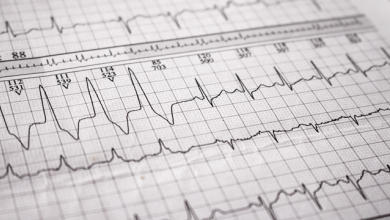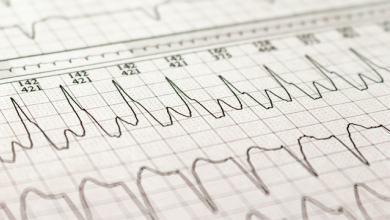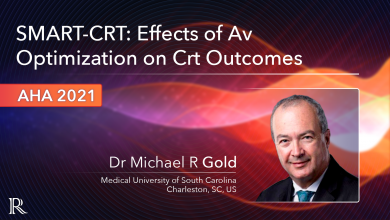Search results
Author(s):
Raphael K Sung
,
Penelope A Boyden
,
Satoshi Higuchi
,
et al
Added:
2 years ago
Author(s):
Steven M Markowitz
,
George Thomas
,
Christopher F Liu
,
et al
Added:
3 years ago
Pioneering electrophysiology studies in the 1990s defined the anatomical boundaries of typical atrial flutter, identified regions for effective catheter ablation of this arrhythmia and described procedural endpoints to minimise recurrences after ablation. Activation and entrainment mapping demonstrated that typical flutter arises from reentry around the tricuspid annulus.1 Criteria to confirm…
View more
Author(s):
Rodrigo Gallardo Lobo
,
Michael Griffith
,
Joseph De Bono
Added:
3 years ago
Around 0.8% of live births are affected by some type of congenital heart disease; 30–50% of whom will need one or more surgical interventions, generally during early childhood, involving in some cases complex corrections with patches, baffles or extracardiac circuits.1,2
As a result of advances in surgical interventions, the life expectancy of patients with congenital heart disease has…
View more
Author(s):
Eduardo Back Sternick
,
Mariana Faustino
,
Frederico Soares Correa
,
et al
Added:
3 years ago
Radiofrequency (RF) catheter ablation is currently the treatment of choice in patients with accessory pathways (APs) and Wolff– Parkinson–White syndrome, and is shown to have a success rate >95 %.1 APs usually have endocardial ventricular and atrial insertions, located close to the atrioventricular valve rings, making most endocardial catheter ablation procedures relatively straightforward and…
View more
Update in Cardiac Pacing
Author(s):
Nishant Verma
,
Bradley P Knight
Added:
3 years ago
Article
Electrical Mapping to Optimise Heart Failure Outcomes Following Cardiac Resynchronisation Therapy
Author(s):
David O’Donnell
Added:
8 years ago
Article
Wide Complex Tachycardia
Author(s):
John B Garner
,
John M Miller
Added:
3 years ago
Article
Author(s):
Stephen P Page
,
Mehul Dhinoja
Added:
3 years ago
Over the last 30 years, the role of catheter ablation for treating a wide range of arrhythmias has increased dramatically. The electrophysiological substrates of the more straightforward arrhythmias (such as atrio-ventricular reciprocating tachycardia and atrio-ventricular nodal re-entry tachycardia) have now been well defined and excellent long-term success rates can be achieved at minimal risk…
View more
Author(s):
Michael R Gold
Added:
2 years ago
In this video, Dr Michael R Gold (Medical University of South Carolina, Charleston, SC, US) shares the primary results of the Smart-CRT Trial. The study investigated the efficacy of an atrioventricular optimization algorithm to improve reverse remodeling among patients undergoing cardiac resynchronization therapy (CRT) in the presence of interventricular electrical delay.
Discussion Points…
View more
Author(s):
Ethan R Ellis
,
Mark E Josephson
Added:
3 years ago
Cardiomyopathies are heterogeneous heart muscle disorders with a wide range of aetiologies and clinical manifestations. They are often defined by their causes (i.e. hypertension, prior myocardial infarction, valvular heart disease), although current major society definitions describe cardiomyopathy as the presence of abnormal myocardial structure and/or function in the absence of underlying…
View more















 « First
« First